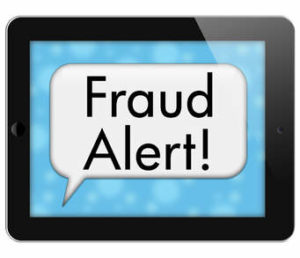FREEZING FRAUD by Carrie Kerskie

Carrie Kerskie
New account fraud occurs when an imposter opens a new credit account using the identity of another person. The most common accounts are credit cards and HELOC (home equity line of credit) accounts. New account fraud is on the rise. The 2018 Consumer Sentinel Network Data Book reported a 25% increase in new account fraud complaints.
New account fraud occurs when an imposter opens a new credit account using the identity of another person. To commit new account fraud, the imposter completes a credit application using the victim’s name, address, date of birth and social security number. This information is available online for $1.00. That’s right, $1.00 is all it takes to purchase your identity. Since 2005, over one billion personal records have been exposed nationally in data security breaches. There was nearly a half a billion exposed in 2018 alone. The surplus of sensitive information available online has led to a decline in its value.

Warning signs of new account fraud:
• Collection call for an unpaid unknown credit account
• Receiving a new, unexpected credit card in the mail
• Receiving a welcome or denial letter from an
unknown creditor
• Observing an unknown credit account or hard inquiry on
your credit report
A hard credit inquiry is a request by a new creditor to review your credit report. An unknown hard credit inquiry on your credit history report means that an imposter has used your identity to apply for a new credit account. Reviewing your credit report every year is highly recommended.
Federal law enables you to receive one free credit report from each credit reporting agency (CRA). The three major CRA’s are Experian, Equifax, and TransUnion. To request your free credit report, visit ww.annualcreditreport.com or call 1-877-322-8228. This website was created by the Federal Trade Commission and three major CRAs.
Your best defense against new account fraud is to establish a security freeze, also known as a credit freeze, on your credit report. A credit freeze prohibits the CRA from disclosing your credit history report to any new creditor. If the new creditor is unable to review your credit report, it is unlikely that creditor will open the
account. Again, a credit freeze is your best defense against new account fraud.
To establish a credit freeze you must contact each CRA by either phone, mail, or online. Creating a credit freeze online is the fastest and most accurate way to establish a credit freeze. Once created, each credit bureau will provide you with a PIN. Equifax may omit the PIN in place of you establishing an online account.
Below are the websites for the three major CRAs.
TransUnion – https://service.transunion.com/dss/orderStep1_form.page
Experian – https://www.experian.com/freeze/center.html
Equifax – https://www.freeze.equifax.com
There may come a time when you need to permit a creditor to review your credit report. Ask your potential creditor from which CRA will they request your credit report. If known, contact that CRA and provide them with your PIN and the number of days you would like to lift your credit freeze temporarily. If the specific CRA is unknown, contact each CRA to lift the credit freeze temporarily.
There are two additional CRAs that need your attention, Innovis and the National Consumer Telecom and Utilities Exchange (NCTUE). Innovis is a newer credit reporting agency that has become more robust in recent years. To request your free credit report or establish a credit freeze visit: https://www.innovis.com/.
The NCTUE collects information about utilities and telecom, such as mobile phone, account information. To request your free credit report or to establish a credit freeze visit http://www.nctue.com/Consumers.
Freezing your credit with all five CRAs provides you with the best defense against new account fraud



Leave a Reply
Want to join the discussion?Feel free to contribute!